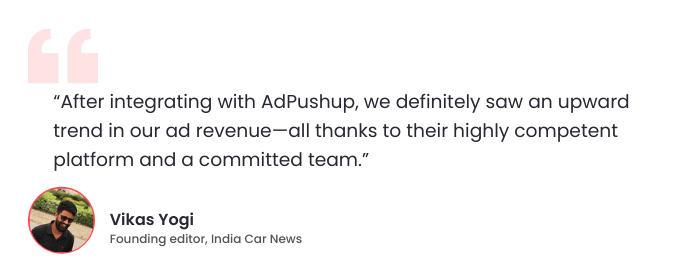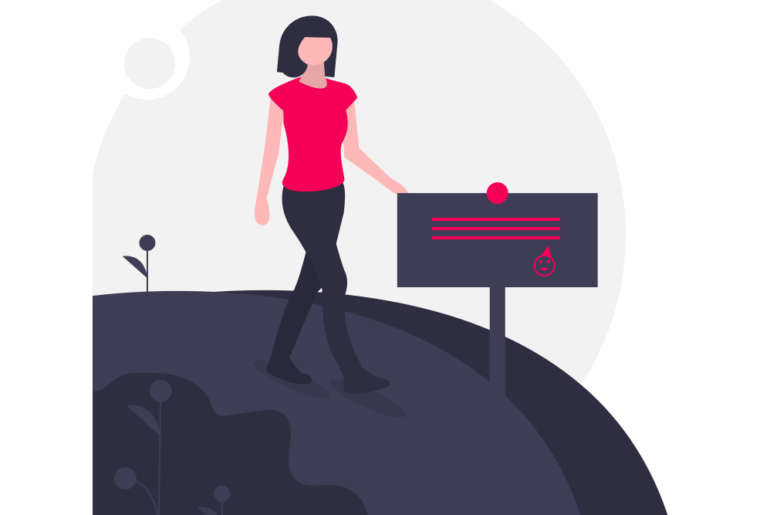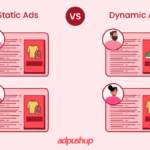Walled gardens refer to platforms where the provider has complete authority over the content or media, and offers limited access to align with its preferences, ultimately aiming to establish a monopoly. In this post, we will explore the walled garden and how it impacts the digital advertising market.
Ever wondered how Google manages to know the exact problem faced by users? Not just Google, services provided by its competitors like Amazon and Facebook are no less astonishing. The answer to such success is access to the right user data.
Specifically, in advertisement technology (AdTech), data plays a vital role in defining the success of a business. This is when ‘walled garden’ is used as a term to define the use of data by these organizations.
What are Walled Gardens in Advertising? (Walled Garden Meaning)
“What is a walled garden?” is one of the most common questions asked in the advertising ecosystem.
Walled gardens are organizations that keep their technology, information, and user data to themselves, with no intention of sharing it. A walled garden is a closed ecosystem operated by people within the ecosystem without the involvement of an outside organization.
In ad tech, the exchange of user data via cookie syncing between parties is necessary in order to show relevant ads and maximize revenue. However, a walled garden makes the job tricky for this exchange.
Google, Facebook, and Amazon are three ad tech giants that pocket more than half of all the digital ad spend. While Google partners up with other firms (small or large), Facebook and Amazon like to keep their walls as high as possible when it comes to data sharing.
History of Walled Garden (Origin of Walled Gardens)
The term’ walled garden’ was first coined by John Malone, the founder of Tele-Communication Inc., later acquired by AT&T. Since then, various industries have used this term, but mainly in the context of a closed platform.
The first example of a walled garden was recorded in the 70s. Bell System, a telecommunications company in the USA, decided to design hardware specifically for its network users. The hardware (phones) is supposed to be leased from the company rather than owned by the users.
Fast forward a few decades, and you can see walled gardens everywhere. From ISPs to local ice cream stores, every business likes to keep a record of their users in their way.
Why do Walled Gardens Exist?
The walled gardens came into existence because of the implementation of GDPR in 2018.
Before GDPR, tech giants like Google and Meta would provide access to their user data to third-party vendors. But after the introduction of GDPR, these tech giants walled up within three months! GDPR made it imperative for these tech giants to handle personal data more carefully lest they get fined up to 4% of their global annual turnover.
The emergence of walled gardens made it easier for tech giants to enforce data privacy laws and enhance user experience. However, to keep the ad revenue flowing, these ad tech platforms created their proprietary platforms for advertisers to gain access to their first-party data. It was a gatekeeping strategy. These platforms walled up and opened selective doorways like their own ad networks (like Google Display Network or Meta Audience Network) or demand-side platforms (like Amazon DSP) to access their data ecosystem.
While this step made companies comply with the new regulations, it also gave them a way to capture significant ad spend and assert dominance in the advertising space.

What are some Walled Garden Examples?
Not all publishers or retailers can create walled gardens. There are quite a few reasons: the size of user data available to you, the technology to process, segregate, and monetize them, and resources to develop proprietary technology, to name a few.
Let’s look at some walled garden examples to understand them better.
1. Google
Accounting for 91.54% of the global search engine market, Google is the largest internet company in the world. It uses a multitude of platforms like AdSense, Display Network, and Ad Manager to provide advertisers access to its walled garden network.
The Google walled garden retains user data within its ecosystem, which makes it challenging for advertisers to track their campaigns beyond these platforms.
Walled garden platforms: YouTube, Google Search, Gmail
2. Meta (formerly Facebook)
Next on the list of walled garden examples is Meta. The company’s family of apps (FoA) has the highest number of users around the world – each platform clocking over a billion monthly users.
Meta has created a solid framework to monetize this data via the Meta Audience Network. In simple words, what a Display Network is to Google is Audience Network to Meta. The tech giant is also utilizing AI to keep the advertisers within its ambit. For example, Meta had launched Advantage Plus Shopping campaigns on Facebook ads in 2022. A highly automated type of campaign, it eliminates the manual steps of ad creation and presents up to 150 ad creative combinations at once.
The MAN (Meta Audience Network) offers robust ad targeting but restricts data to its own environment, limiting integration with external systems.
Walled Garden platforms: Facebook, Instagram, WhatsApp, and FB Messenger.
3. Amazon
Amazon, one of the most popular e-commerce websites, leads the online marketplace global rankings in terms of traffic. One can only imagine the amount of data that would be generated within its ecosystem.
Apart from e-commerce, Amazon offers other services like OTT & music streaming via Amazon Prime, Alexa, & AWS Cloud to name a few.
At the same time, Amazon also has robust advertiser solutions like Amazon DSP and Amazon Marketing Services to reach relevant audiences.
The company, like any other walled garden, has a secure hold over its data. It maintains user and purchase data within the platform, offering limited transparency and no data portability to outside advertisers.
4. Apple
Apple is the most valuable brand in the world, having a market capitalization of $3.67 trillion as of December 2024. Another thing to consider is that iOS users spend 2.5 times more on in-app purchases than Android users. This makes the Apple walled garden a lucrative ecosystem for advertisers to run campaigns.
To tap into this user base, advertisers can utilize Apple Search Ads. Moreover, advertisers can even run ads on Apple News Stocks and reach over 60 million active monthly users with Apple Advertising.
However, Apple has strict privacy policies (App Tracking Transparency). Having a dynastic preference for closed systems, Apple restricts third-party data access while growing its ad network.
Walled Garden platforms: Apple Music, App Store, Apple TV+
5. TikTok
Around 170 million people in the US use TikTok monthly, making it one of the most dominant platforms. Another reason that TikTok is a fiscally rewarding venture for advertisers is that 60% of users are Gen-Z.
By using TikTok Ads, advertisers can harness the immense user data to fine-tune their ad campaigns. Just like Meta, TikTok also launched AI-based Smart+ in October 2024 to automate major steps in the marketing funnel.
Just like other walled gardens, Tiktok also keeps user behavior and ad performance data within its platform, offering limited external insights.
6. Microsoft
The last on our list of walled garden examples is Microsoft. Here’s the truth: Bing comes nowhere near Google’s search engine in terms of market share. However, Microsoft has an edge that even other walled gardens would envy – LinkedIn – the number one B2B marketing channel. Moreover, LinkedIn’s lead conversion rates are three times those of the other ad platforms.
Another walled garden by Microsoft is the Mobile Plans Walled Garden. All of the data present within Microsoft’s walled garden can be accessed via Microsoft Advertising.
However, the company strictly controls data within its environment, especially on professional platforms like LinkedIn.
Apart from the above examples, we also have big publishers like Forbes, The Walled Street Journal, and National Geographic, which have created their walled gardens. They do it by creating a subscription funnel and encouraging visitors to utilize it.
To keep the user engaged, they make sure that their content is unique and the information is not available anywhere else. Such publishers generally partner with big ad tech firms to handle the advertising part.
What are the Benefits and Drawbacks of a Walled Garden?
Consider walled gardens to be a pragmatic compromise. They do choke the market of data and resources, but in return, keep the user data secure. To understand more why walled gardens are a pragmatic compromise, let’s look at their benefits and drawbacks.
Benefits of a Walled Garden
There are several benefits of a walled garden, such as:
1. Enhanced Data Privacy and Control
As walled gardens restrict data access to third-party vendors, all the data remains within their umbrella. This fosters an ecosystem that places user privacy in the center. These platforms are known to comply with strict data privacy laws and even have their own privacy policies that create a secure environment for the users and marketers to function.
2. Monetization Opportunities
Walled gardens provide robust monetization opportunities to advertisers. Although the CPMs can be a bit on the higher end compared to the open internet, the increased campaign efficiency makes up for it.
3. Better User Experience
Walled gardens have a reputation to maintain due to their vast user base. These platforms can face severe backlash if they were to compromise on the UI/UX. Hence, the walled gardens always follow a cohesive strategy where the ad placement doesn’t disrupt the user experience but complements it.
Moreover, you can rest assured that with their advanced targeting technologies, your ad will be shown to the most relevant user.
4. Cross-device Targeting
One significant advantage of walled gardens is their cross-device targeting ability. With walled gardens, you can reach a single user across multiple devices. But how? The logic is simple: users tend to use various devices like phones and laptops to access their accounts (e.g., Gmail, Amazon Prime). When this data gets shared with the advertisers, it becomes easy for them to reach their audience no matter what device they are using.
5. Data-driven Innovation
Walled gardens can offer you a lot of insights into your users. This is so because these platforms store all interactions and event-based data on a user. For example, if a user were to search about Seiko watches on Google, the ad tech platform can note down each interaction that the user had to complete its search intent.
Using this nuanced data can improve the targeting capabilities ten-fold. Hence, your ad can reach the most interested user, leading to a higher probability of conversion.
Drawbacks of Walled Garden
1. Competing with Similar Businesses
The competition to provide the best services to the user while competing with other similar service providers can be tricky. The brand needs to keep coming up with new and innovative ideas (targeting, ad types, reporting functionality) to keep users happy and engaged without users being distracted by others targeting the same users. This becomes more difficult in a walled garden because it needs to maintain privacy while still needing information about competitors.
2. Limited Reach
Walled gardens have a lot of users who will get to see your ads. However, your ads will be confined to the walls of these tech gardens. Due to this, you can lose out on potential customers who might not be on that platform.
For example, if you are targeting Gen-Z, then advertising only on Meta won’t work as Gen-Z uses other platforms as well, like TikTok, LinkedIn, and even Snapchat.
This brings us to another disadvantage of the walled garden model.
3. Lack of Cross-platform Collaboration
The walled garden approach works on conducting all marketing activities within a single ecosystem. However, advertisers with ambitious ad campaigns may find it restrictive. To overcome this, the advertiser will have to create an account in each walled garden and run separate campaigns. This lack of unified interface or collaboration amongst walled gardens can deter advertisers from running campaigns through them.
4. Transparency Issues
The scope of data collaboration between the platform and the advertiser is limited. Moreover, the tech firm highly dominates it; only they get to decide the data they want to share. Because of this, advertisers are left with limited visibility of where their ads were placed, who is seeing them, and how the ad placement is decided.
5. Higher Costs
Owing to their premium value, these platforms charge advertisers a higher CPC or CPM. And as these walled gardens offer no bargaining power to the advertiser, their ROAS tends to be lower.
Walled Garden Vs Open Internet
| Feature | Walled Gardens | Open Internet |
| Platform Control | Closed advertising ecosystem, high level of control | Open advertising ecosystem, low level of control |
| Targeting | Highly targeted campaigns (first-party data), cross-platform targeting not possible | Advanced targeting options (third-party data), possible to advertise across platforms |
| Ad Formats | Mostly traditional formats (image or video ads) | Variety of creative formats, including image, video, rich media, in-game ads, dynamic ads, etc. |
| Reach | Broad – global audience within the walled gardens’ ecosystem (e.g., Facebook users) | Broad – global audience across various platforms and websites |
| Flexibility | Limited flexibility; campaigns may need to restart if edits are made (e.g., Facebook) | Greater flexibility to adjust campaigns in real-time, optimizing targeting, messaging, and creatives based on performance data |
| Reporting | Aggregated view of ad performance, limited transparency | Detailed performance data (impressions, clicks, conversions) |
| Transparency | Lack of transparency in measurement, grading their own homework | Transparency in measurement, third-party verification available |
| Data Ownership | Little insight into data, data used for platform’s own purposes | Clients can import first-party data, offering more control over targeting and audience insights |
What is the future of Walled Garden in AdTech?
The walled gardens work in a highly monopolized environment. However, those walls can crumble due to the EU’s Digital Markets Act (DMA) and Digital Services Act (DSA), and other such regulations.
The DSA concentrates on improving user privacy, safeguarding minors, and limiting advertising based on sensitive data like race, gender, and ethnicity. On the other hand, the DMA seeks to curtail market monopolization and anti-competitive business activities.
Generative AI is definitely one future trend that marketers should look out for. By creating new features and enhancing user experience, AI developments may help walled gardens keep consumers in their ecosystem. These enhancements can make platforms more valuable and engaging for users by personalizing user interactions, refining ad targeting, and improving content recommendations.
However, if the walled gardens were to lose their value in the eyes of advertisers, they may look for other alternatives. One of them being header bidding. It is a type of programmatic buying process where auctions take place per impression in real-time settings. This increases the bid pressure and provides higher eCPMs to the publishers. Moreover, advertisers also get to choose from a large pool of publishers to display their ads to the most relevant audience.
For walled gardens to sustain their operations in the programmatic advertising ecosystem, they will need to adapt more flexible practices to create a more collaborative environment.
In Closing
In ad tech, walled gardens have a monopoly over the market, ruling over data and resources. Independent companies are stuck dealing with the little that they have in terms of users, control, and money.
Walled gardens like Google and Facebook are earning higher margins year-on-year while maintaining a firm grip on the market. These companies offer incomparable digital advertising scale and targeting, and those in the independent ecosystem might feel choked out of the information and spending coming their way. Considering the influence of these businesses, it’s hard to expect equality in the advertising market for independent firms for now.
Before you leave, we’d like to do a little self plug about ourselves too. Take a look at what AdPushup does and why we’re hand-picked by Google as a certified publishing partner.
AdPushup is a Google Certified Publishing Partner. Over the years, we have helped web publishers sustainably increase their ad CTRs, CPMs, and overall revenues without compromising on UX.
Got a minute? Take a look at how we delivered a 534% ad revenue uplift in 6 Months for CCNA7. If you want to learn how our technology can do the same for you, go ahead and request a demo.
Frequently Asked Questions
A walled garden is an organization which keeps its technology, information, and user data to itself, with no intention of sharing it. In simpler words, a walled garden is a closed ecosystem, operated by people within the ecosystem, without the involvement of an outside organization.
Walled garden ensures better accuracy, security, and cross-device targeting.
Walled gardens choke the market of data and resources. They are difficult to manage and require brands to frequently come up with innovative ideas (targeting, ad types, reporting functionality) to keep users engaged.








